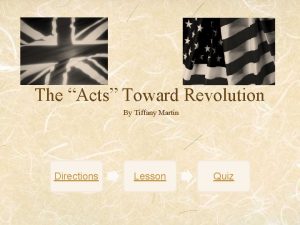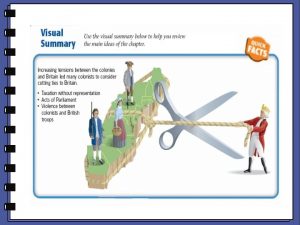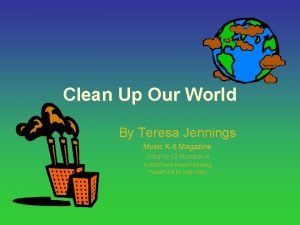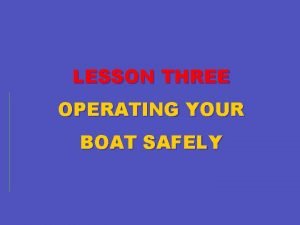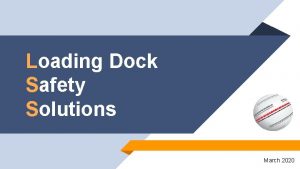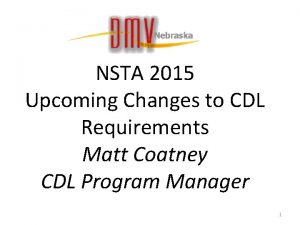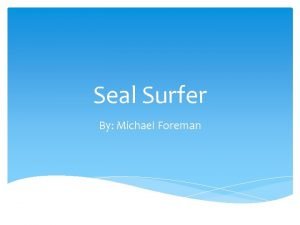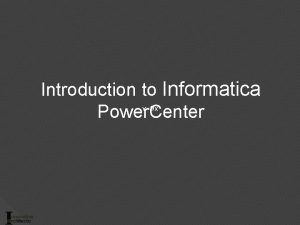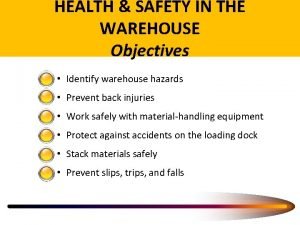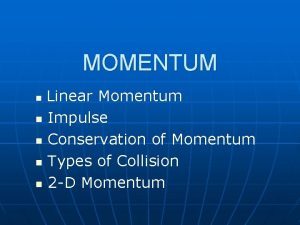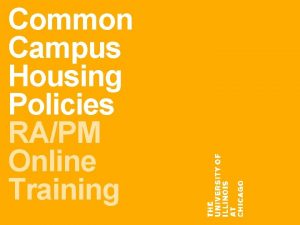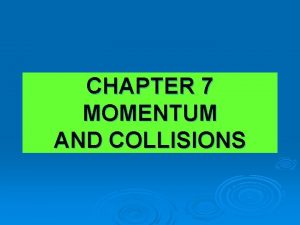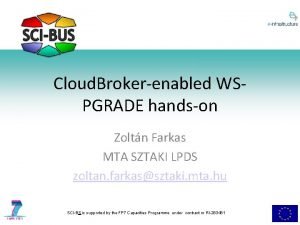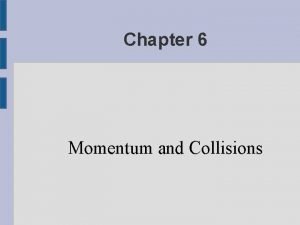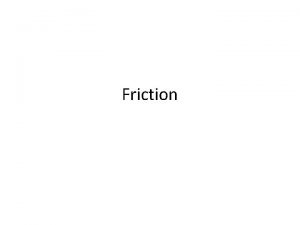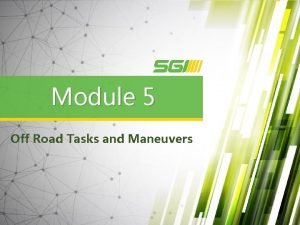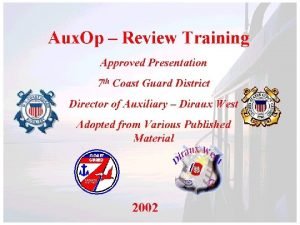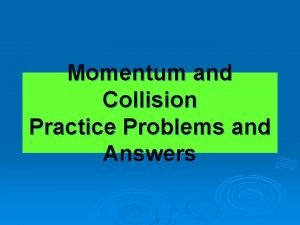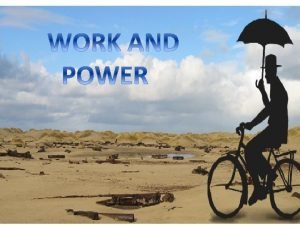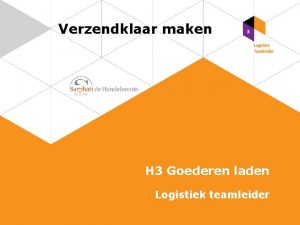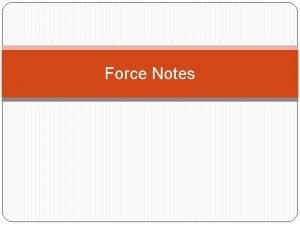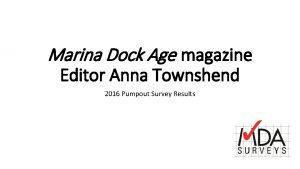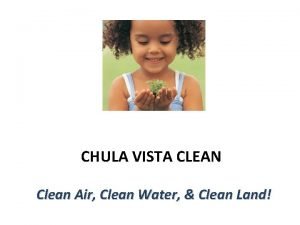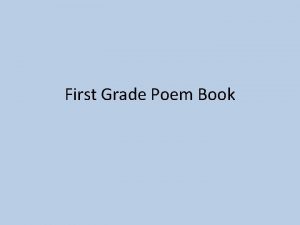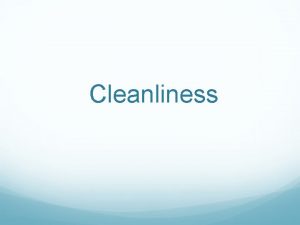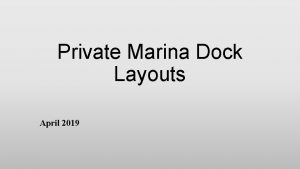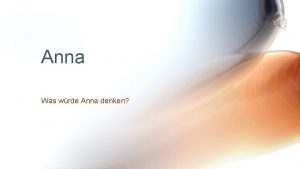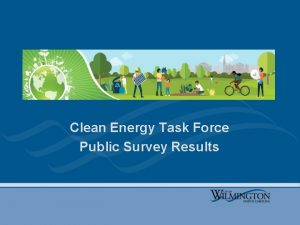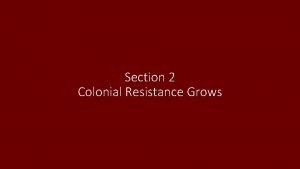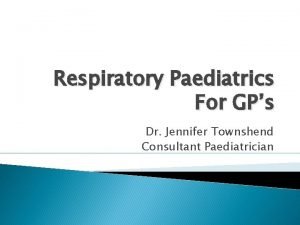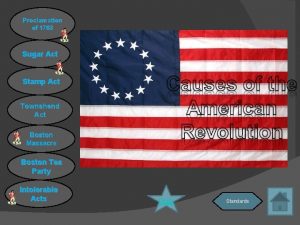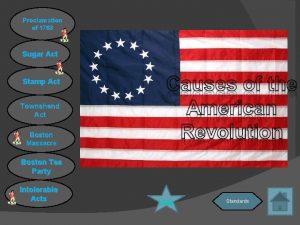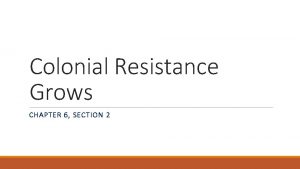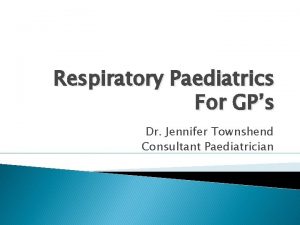Clean Marina Survey 2013 Anna Townshend Marina Dock





























- Slides: 29

Clean Marina Survey 2013 Anna Townshend, Marina Dock Age editor

Why Surveys? • Not a lot of marina data out there! • Overall, those outside the industry, especially investors, need benchmarks and numbers for comparison. • For those inside the industry, you can gauge the overall health of the industry/program. • Gauge your own health, in comparison to others. Be an advocate for the marina industry data! MDA surveys are conducted online, and can be found in e-newsletters and our website. If you do not receive our surveys by email, please see me, or email me at atownshend@marinadockage. com.

Clean Marina Survey Statistics Non-CM Spring 2013 MDA April issue Topics Clean Marina Procedures/Practices Most Challenging/Easiest Purchasing Equipment Infrastructure Changes Cost Savings Certification/Annual Costs Time Investment Why are you not a CM? Where do you need improvement? Cross-tabulation Regional Facility Size Type of Facility

Respondent Profile – Regional/States 5% 27% 6% 13% 3% Top States 36% 4% 2% 4% Regional – Northeast 9% Midwest 18% South 42% California 16% Florida 13% Washington 8% Maryland 7% Virginia 6% Minnesota 5% South Carolina 5% Michigan 4% Wisconsin 4% West 31%

Respondent Profile – Type of Facility Storage vs. Service Boatyard/slips and/or storage) 38% Marina (wet slips only) 49% Boatyard 39% Boatyard/service Dry Storage Marina (wet center (no slips and dry only slips/storage) storage 1% 1% 11% Marinas 60%

Respondent Profile – Type of Facility/ regional Marinas Boatyards 2% 11% 35% 11% 6% 7% 11% 18% 0% 7% 39% 32% 3% 5% 3% 7% 2% 2%

Respondent Profile – Facility Size Large (250+) 44% Small (1 to 99) 24% no slips (boatyard only) 1% 1 -49 12% 50 -99 12% 250+ 44% 150 -200 20% 100 -149 1% 200 -249 10% Medium (100 to 249) 31%

Clean Marina Procedures/Practices – Overall In what areas, did you implement procedures or practices as part of the Clean Marina program? Creating, restoring or protecting shoreline habitat Fish Cleaning Contractually binding customers and service providers Wastewater, powerwashing, NPDES Vessel Maintenance and Repair 28% 33% 38% 43% 49% Sewage Handling 57% Stormwater, SWPPP 58% Boater Education 59% Petroleum control, oil spill response, SPCC 64% Waste containment and disposal/hazardous waste management Emergency Response Plans 65% 66% Documentation, paperwork, recordkeeping 68% Recycling 69%

Clean Marina Procedures/Practices – By Facility Type Creating, restoring or protecting shoreline habitat 30% Fish Cleaning 36% Contractually binding customers and service providers 38% Wastewater, powerwashing, NPDES Vessel Maintenance and Repair Sewage Handling Stormwater, SWPPP Marinas Boatyards 22% 24% 33% 58% 42% 60% 61% 51% Boater Education 59% Petroleum control, oil spill response, SPCC 59% 49% 67% 56% 64% Waste containment and disposal/hazardous waste management Emergency Response Plans 67% 62% 68% 62% Documentation, paperwork, recordkeeping 64% Recycling 68% 73% 67%

What is the most challenging Clean Marina practice to implement? Regulation enforcement Capturing antifreeze 1% 2% 19% Stormwater, SWPPP 14% Wastewater/NPDES 9% Waste containment/disposal Sewage handing 1% 5% Vessel maintenance/repair 7% Boater education 10% Customer/subcontractor contracts Petroleum control 2% 6% Fishing cleaning 4% Recycling 14% Documentation, paperwork Shoreline habitat Don't Know 2% 4%

w m 10% 8% W a as ter co tew , SW P a nt ai ter/ PP nm NP e DE nt Ve / Se ss di S s el w m ag pos ai nt e ha al en n Cu an din st g ce om Bo / a r er t /s er e epa ub ir co duc at nt r Pe ac ion tro to r le um con Fis co tra c hi Do ng ntro ts cl cu l ea m en ni n ta R ec g tio y n, p clin g Sh ap er or w el Ca or i n p e Re tur h k a in gu g a bit la tio nt at i n en free fo ze rc em en t as te W or St Most Challenging Clean Marina Procedures/Practices -- REGIONAL 8% 29% 30% 8% 12% 15% 8% 7% 12% 17% 12% 3% 3% 10% 6% 7% 27% 13% 30% 12% 4% 8% 27% 3% 4% 10% 7% 10% 4% 12% 4% 3% 3% West South Midwest Northeast

Most Challenging Clean Marina Procedures/Practices – By Facility Size Capturing antifreeze (1%) Shoreline habitat (2%) 5% 3% 14% Documentation, paperwork (14%) Recycling (4%) 11% Fish cleaning (6%) Petroleum control (2%) Customer/subcontractor contracts (10%) 14% 3% 5% Boater education (7%) 3% Vessel maintenance/repair (5%) 3% Sewage Handling (1%) 3% Waste containment/disposal (9%) 3% 11% 14% Large Medium Small 10% 16% Wastewater/NPDES (14%) 14%17% Stormwater, SWPPP (19%) 14% 19% 44%

W w as Wa ate te co stew r, SW nt a ai ter PPP nm /N en PD Ve ES t/ ss S d ew el isp m a Cu ge osa ai st nt om en han l d er a /s Bo nce ing ub a / co ter rep nt a ra edu ir ct ca o Pe r c tion tro on t le um ract Fis co s hi nt Do n ro g cu c m le l an en i ta tio Rec ng n, y p clin Sh ap or er g w el o in e rk ha bi ta t m or St Most Challenging Clean Marina Procedures/Practices – By Facility Type 26% 22% 18% 15% 12% 6% 6% 3% 3% 3% 4% 4% 2% 3% 3% 8% 9% 3% 2% Marina Boatyard

Easiest Clean Marina Procedures/Practices Shoreline Emergency habitat Response Plat Documentation, 1% 5% paperwork 8% None 4% Stormwater, SWPP P 5% Waste containment/disposal 8% Recycling 24% Boater education 19% Fish cleaning Petroleum 1% control Waste containment/disposal 8% Sewage handing 12% Vessel maintenance/repair 2%

Pollution Prevention Equipment What equipment did you purchase for CM certification? Vacuum sanders Infrastructure Changes Recycling tanks or bins Dock, Pumpout, fuel dock Washwater recycling system Low flow toilets Automatic light fixtures Washpad, wastewater collection Electric hand dryers Fueling equipment Landscaping, stormwater Storm drain filters retention Oil booms Dry Storage Building 33% 17% 24% 5% Marina Basin, mechanical/structural for increased flow Office Builidngs Hazardous Waste Containment 6% 7% 2%

Infrastructure Changes – by size Percentage of facilities (small, medium and large) that made infrastructure changes in each category 45% 38% Small Medium 34% Large 25% 20% 15% 10% 9% 9% 8% 5%5% 5% 2% 1%1% Hazardous Waste Containment 9% Marina Basin (6%) Landscaping, stormwater retention Docks. Pumpout, fuel dock (33%)

Clean Marina Costs/Time Investment Total initial certification cost: $31, 765 Northeast $71, 438 Midwest $30, 038 South $42, 468 West $1, 925 Small $201, 000 Annual Environmental Costs for non-CMs – $30, 482 Medium $16, 158 Large $26, 629 Marinas $14, 493 Boatyards$52, 55 3 Annual Environmental Costs: $7, 286 Northeast $1, 816 Midwest $30, 038 South $42, 468 West $3, 368 Small $51, 375 Medium $3, 223 Marinas $4, 129 Boatyards$11, 40 6 Large $6, 521 Estimate the total time investment from initial interest until final certification: 11 months Northeast: 12 Midwest: 13 South: 12 West: 5 Small 22 Medium 10 Large 8

Clean Marina Cost Savings Did you experience cost savings after being certified a Clean Marina? No, costs have stayed the same. 52% REGIONAL 38% 89% 46% No, costs have gone up. 31% 52% No, costs stayed the same 23% No, costs went up 34% 38% 11% Northeast Yes 17% Midwest 20% South 37% 11% West Yes

Clean Marina Cost Savings – by Facility Size/Size 38% 89% 46% No, costs stayed the same 53% 47% No, costs went up 23% 34% Yes 29% 35% 38% 20% 11% Small Medium Large 18% Marinas 18% Boatyards

Grant Funding for Certification or Compliance No grant funding 67% CVA Funds (pumpout) BIG Funds (transient vessels) State/municipal funds About 1//3 used funding Yes, only for certification Yes, for 11% certification and continued compliance 11% Yes, after certification, for continued compliance 11%

Funded Facilities (1/3) – REGIONAL West South Midwest Northeast 4%7% 20% 26% 11% 6% 6% 10% 63% 81% 30% 60% For Certification Only For certification and compliance After certification, for compliance No funding

Clean Marina Questions?

Non-Clean Marinas – Respondent Profile, regional/states 2% 9% 13% 17% 34% 0% 4% Regional – Northeast 36% CMs – Northeast 9% 2% Midwest 15% Midwest 18% Top States North Carolina 13% Florida 9% New York 9% Maryland 9% Massachusetts 6% Ohio 6% California 4% Connecticut 4% Indiana 4% New Hampshire 4% New Jersey 4% Rhode Island 4% Texas 4% Virginia 4% South 40% West 9% South 42% West

What’s the number one reason why are you NOT a Clean Marina? Unsupportive No pumpout boaters 6% 2% Inadequate staffing 12% No state certification program 24% Time 20% Cost 27% Clean Marina Costs vs. the Cost of Not Being a Clean Marina Don't know about Clean Marina 9%

Procedures/Practices for Pollution Control and/or Environmental Regulations for non-CMs Creating, restoring or protecting. . . 28% 53% Emergency Response Plans Fish Cleaning Contractually binding customers and. . . 34% 38% Wastewater, powerwashing, NPDES 43% Vessel Maintenance and Repair 57% Sewage Handling 68% Stormwater, SWPPP Boater Education 55% 32% Petroleum control, oil spill response, . . . 74% Waste containment and. . . 68% Emergency Response Plans Documentation, paperwork, . . . Recycling 66% 45% 60%

Most Challenging/Difficult Practices or Procedures for Non-CMs Stormwater, SWPPP 19% Wastewater/NPDES 14% Waste containment/disposal Sewage handing 9% 1% Vessel maintenance/repair 5% Boater education 7% Customer/subcontractor contracts Petroleum control 10% 2% Fishing cleaning 6% Recycling 4% Documentation, paperwork Shoreline habitat Don't Know 14% 2% 4%

In what areas, do you most need improvement? Creating, restoring or protecting Emergency shoreline habitat Response Plans 6% Fish Cleaning 7% 0% None 13% Wastewater, powerwashing, NPDES 26% Vessel Maintenance Sewage Handling and Repair 3% 7% Stormwater, SWPPP 10% Recycling 6% Documentation, paperwork, recordkeeping 13% Emergency Response Plans Petroleum Waste Boater Education 7% control, oil spill containment and 3% disposal/hazardous response, SPCC waste 0% management 0%

Infrastructure Changes for Pollution Control or Regulation Standards – overall Non-CMs 43% Docks. Pumpout, fuel dock Washpad, wastewater collection 38% Landscaping, stormwater retenti. . . 40% Dry Storage Building Marina Basin, . . . Office Builidngs 11% 6% 17%

Thank you! Watch for MDA surveys all year round! Questions, comments, concerns, contact Anna Townshend, atownshend@marinadockage. com 314 -241 -7355
 Townshend acts
Townshend acts Townshend act clipart
Townshend act clipart Why did the colonists hate the townshend acts
Why did the colonists hate the townshend acts Charlotte payne townshend
Charlotte payne townshend Where did the townshend act take place
Where did the townshend act take place Townshend act
Townshend act Clean up everybody let's clean up
Clean up everybody let's clean up Ample abcde
Ample abcde Rumus fwa
Rumus fwa Casting off with wind toward dock
Casting off with wind toward dock Loading dock safety
Loading dock safety Alley docking tractor trailer
Alley docking tractor trailer Seal surfer
Seal surfer A 400 newton girl standing on a dock
A 400 newton girl standing on a dock Slipway dock adalah
Slipway dock adalah Informatica powercenter overview
Informatica powercenter overview Warehouse health and safety requirements
Warehouse health and safety requirements Two campers dock a canoe
Two campers dock a canoe Uic housing dock
Uic housing dock Dock appointment scheduler
Dock appointment scheduler Two campers dock a canoe
Two campers dock a canoe Farkas dock
Farkas dock A deer with a mass of 146 kg
A deer with a mass of 146 kg Ff = μfn
Ff = μfn Alley dock backing
Alley dock backing Stops the bow from moving outward from the dock
Stops the bow from moving outward from the dock What velocity must a 1210 kg car
What velocity must a 1210 kg car A sailor pulls a boat along a dock
A sailor pulls a boat along a dock Tachograafschijf uitleg
Tachograafschijf uitleg Unit daya
Unit daya

